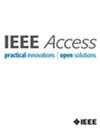Improving Upper Limb Movement Classification from EEG Signals Using Enhanced Regularized Correlation-Based Common Spatio-Spectral Patterns
IF 3.4
3区 计算机科学
Q2 COMPUTER SCIENCE, INFORMATION SYSTEMS
引用次数: 0
Abstract
Detection of movement from electroencephalogram (EEG) signals is crucial for advancing brain-computer interface (BCI) systems, particularly in rehabilitating individuals with disabilities. This study focuses on decoding two types of ipsilateral movements (right arm and thumb) and the resting state from EEG signals—a challenging task due to the reduced signal discrimination between ipsilateral movements. To address this challenge, we propose a novel framework that combines precise segmentation of EEG signals during movement with an improved feature extraction method. First, we detect accurate segmentation of EEG signals by using the teager-kaiser energy operator for electromyographic (EMG) signals, which allows for precise detection of the onset and end of movements. Next, for feature extraction, we developed the regularized correlation-based common spatio-spectral patterns (RCCSSP) algorithm, which improves the traditional common spatial patterns (CSP) by incorporating regularization based on correlation. RCCSSP employs spatio-spectral canonical correlation analysis (SS-CCA) with an advanced regularization approach. Specifically, this method calculates the correlation between two classes for each channel, assigning higher weights to channels with lower correlation to increase their impact while minimizing the effect of noisy channels with higher correlation. Classification is then performed using distance-weighted k-nearest neighbor and support vector machine algorithms. Experimental results from 15 healthy subjects demonstrate that the proposed approach achieves an average classification accuracy of 88.94%, representing a significant 11.66% improvement over the best-reported method. This work highlights the potential of precise movement segmentation and robust feature extraction in decoding ipsilateral movements for BCI applications.基于增强正则相关的公共空间频谱模式改进脑电图信号的上肢运动分类
从脑电图(EEG)信号中检测运动对于推进脑机接口(BCI)系统至关重要,特别是在残疾人康复中。本研究的重点是从脑电图信号中解码两种类型的同侧运动(右臂和拇指)和静息状态,这是一项具有挑战性的任务,因为同侧运动之间的信号区别减少了。为了解决这一挑战,我们提出了一种新的框架,将运动过程中EEG信号的精确分割与改进的特征提取方法相结合。首先,我们通过使用teager-kaiser能量算子对肌电信号进行精确分割,从而精确检测运动的开始和结束。其次,在特征提取方面,提出了基于正则化相关的公共空间光谱模式(RCCSSP)算法,该算法通过引入基于相关的正则化来改进传统的公共空间模式(CSP)。RCCSSP采用空间光谱典型相关分析(SS-CCA)和先进的正则化方法。具体而言,该方法计算每个信道的两个类之间的相关性,为相关性较低的信道分配更高的权重,以增加其影响,同时最小化相关性较高的噪声信道的影响。然后使用距离加权k近邻和支持向量机算法进行分类。15名健康受试者的实验结果表明,该方法的平均分类准确率为88.94%,比目前报道的最佳方法提高了11.66%。这项工作强调了精确运动分割和鲁棒特征提取在脑机接口应用中解码同侧运动的潜力。
本文章由计算机程序翻译,如有差异,请以英文原文为准。
求助全文
约1分钟内获得全文
求助全文
来源期刊

IEEE Access
COMPUTER SCIENCE, INFORMATION SYSTEMSENGIN-ENGINEERING, ELECTRICAL & ELECTRONIC
CiteScore
9.80
自引率
7.70%
发文量
6673
审稿时长
6 weeks
期刊介绍:
IEEE Access® is a multidisciplinary, open access (OA), applications-oriented, all-electronic archival journal that continuously presents the results of original research or development across all of IEEE''s fields of interest.
IEEE Access will publish articles that are of high interest to readers, original, technically correct, and clearly presented. Supported by author publication charges (APC), its hallmarks are a rapid peer review and publication process with open access to all readers. Unlike IEEE''s traditional Transactions or Journals, reviews are "binary", in that reviewers will either Accept or Reject an article in the form it is submitted in order to achieve rapid turnaround. Especially encouraged are submissions on:
Multidisciplinary topics, or applications-oriented articles and negative results that do not fit within the scope of IEEE''s traditional journals.
Practical articles discussing new experiments or measurement techniques, interesting solutions to engineering.
Development of new or improved fabrication or manufacturing techniques.
Reviews or survey articles of new or evolving fields oriented to assist others in understanding the new area.
 求助内容:
求助内容: 应助结果提醒方式:
应助结果提醒方式:


